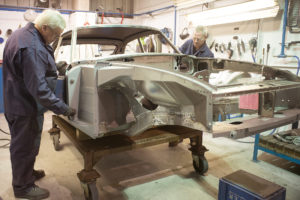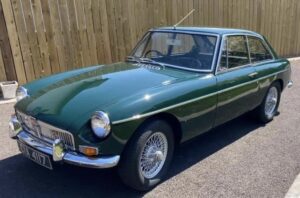Buying an MGF
3 min read
Share this
After some years of production and with a great many MGFs getting onto the market, the prices of good second hand examples are now beginning to fall. To those of us who drive MGBs and Midgets, the MGF did look like an expensive car. However, over the past few years prices of used MGFs have come down to a similar or lower level to that of a well preserved or recently restored MGB.
Much of the appeal of the classic MGB or Midget is the ease of maintenance and the inexpensive and abundant supply of spare parts. It is difficult to predict the costs of spares but as most components for the F come from various Rover parts bins, costs should not be too horrendous. One of the claims made for the MGF was that it would prove to be economical to run and cheap to service.
It is certainly frugal in terms of fuel consumption and is quoted to give up to 33.8 mpg in urban driving conditions and therefore should not prove to be any more expensive to run than a high specification Rover saloon.
At first glance the MGF does not appear to lend itself to DIY maintenance, at least to the same extent that the MGB has done. The MGF is a much more delicate proposition than the MGB particularly with regard to its body work and suspension and these will require more specialist equipment to repair.
However this consideration does not preclude a high level of owner participation in the care of an MGF. The important thing will be the ability to recognise when a job requires the attention of a specialist. After the car has covered the first 6,000 miles, servicing is set for intervals of every 12,000 miles or 12 months.
Return to sports car production
Although driving the MGF is a very different experience from the traditional MGB there remains a similarity between the two models. Despite being separated by a gap of thirty three years, the two cars share a common ancestry. At its launch, the MGB was a development from a tried and tested formula as it had evolved out of a long line of competent sports cars.
The MGF at its debut was in a radically different situation it had to be sufficiently innovative to gain an advantage over the opposition and traditional enough to re-awaken the desire for a British sports car. Its combination of mid-engine layout and Hydragas suspension had to work correctly from the outset and allow the MGF to break into a new market and make a name for itself immediately.
Most importantly it also had to re-claim the unique MG reputation as a sports car maker that had been more or less thrown away by British Leyland in the 1980s.
Styling
The body of the MGF marks a welcome return to shapely curves and it is very nicely proportioned. A design that will last and ‘stand the test of time’ is an essential MG quality.
Even now an MGA or MGB can grace any high street without looking out of place. The MGF retains its handsome looks whether the hood is up or down. The wheels are set close to the corners of the body and give the car a solid and purposeful appearance.
Driving impressions
As a fan of traditional sports cars I was rather wary at the thought of driving the ultra modern MGF. However, I was very pleasantly surprised at the competence of this new MG. Most striking is the incredible combination of civilised comfortable ride and race car quality road holding.
This article by Richard Ladds is reproduced from ‘Enjoying MG’ magazine.







